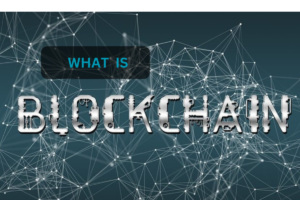The world is on the path of development as much as the whole. The role of technology is the most important in it. Every new day brings a new invention or a new discovery. One such important and revolutionary invention is blockchain technology. Until a few years ago, people only heard the name Bitcoin, but now blockchain has become a separate sector in itself that is changing many industries.
If you want to learn about blockchain but are intimidated by the complex language, then this article is for you. Here we will try to understand in a simple, easy-to-understand way, through examples, what blockchain is, how it works, where it is used, and what are its advantages and disadvantages.

What is a blockchain?
“Blockchain” is a combination of two words: block and chain.
- Block: A packet of information.
- Chain: A chain of blocks.
That is, a blockchain is a digital register or record, which consists of several blocks, and these blocks are connected to each other in the form of a chain. Each block contains different information, such as transaction details.
For example:
You send 800 dollar to your friend Ali, then this information will be stored in a block. As more transactions occur, new blocks will be created and all of them will be connected to each other.
The biggest feature of blockchain: Decentralized System
In traditional systems, such as banks, your transactions are recorded in a central system. That is, a single institution controls everything. If that institution is shut down or hacked, the entire system is affected.
But this is not the case in blockchain. This system is decentralized, meaning that thousands of computers around the world keep the same record at the same time. Even if the data is corrupted in one place, the rest of the computers keep it safe.
How does a blockchain work? (Simple example)
Suppose there are five students in a school: Ali, Ahmed, Fatima, Zainab and Omar.
Every day there is some work in school, such as submitting homework, getting performance marks, etc. If only one student (for example Ali) notes all this, then he may increase the marks at will.
But if all five students write the same things in separate registers, and compare them with each other’s registers every day, then it will be very difficult to make mistakes or cheat.
In the same way, a blockchain allows each user to keep a record, and everyone checks together that none of the records are false.
Key Features of Blockchain
-
Transparency:
All transactions in the blockchain are visible to everyone, but no one’s personal information is revealed.
-
Security:
Each block is encrypted. It is not possible to change a block because the information in it is related to the previous block.
-
Immutability:
Once the information has been entered into the blockchain, no one can erase or change it.
-
Smart Contracts:
Digital contracts that are automatically completed as soon as certain conditions are met.
Where is blockchain mostly used?
-
Cryptocurrency
The most popular use is in digital currencies like Bitcoin, Ethereum, Dogecoin. People can send money to each other without going through a bank.
-
Banking and financial institutions
Banks use blockchain to keep records safe, and help prevent fraud.
-
Voting systems
Transparent and rigged-free elections can be possible through blockchain, because the record of each vote is immutable.
-
Education
Degrees, certificates, and educational records can be stored on blockchain, so that no fake credentials can be created.
-
Health
By storing a patient’s medical records, prescriptions, reports, etc. on blockchain, doctors can provide quick and accurate treatment.
-
Supply Chain Management
Where things are coming from, how they are being made, and who bought them — all of this information can be stored on the blockchain to prevent counterfeiting.
Advantages of Blockchain
-
Fraud Prevention
Since all information is kept secure and transparent, the chances of fraud are reduced.
-
Low Cost
Transaction costs are reduced by not requiring a third party (such as a bank, lawyer, agent).
-
Speed
Some blockchain networks process transactions many times faster than traditional banks.
-
Reliable System
Because each block is recorded on thousands of computers, the possibility of data loss is negligible.
-
Privacy
In blockchain, the user’s identity remains confidential, meaning that information that should not be disclosed is protected.
Disadvantages of Blockchain
-
Slow Speed
Some blockchain networks are very slow, especially when used by many people at the same time.
-
Energy Consumption
Bitcoin mining in particular uses a lot of electricity, which can be harmful to the environment.
-
Lack of Legislation
Blockchain technology is still in its infancy, and many countries around the world do not have complete laws for it.
-
No Reverse or Refund Method
If you send someone the wrong crypto, you can’t get it back, because the transaction cannot be reversed.
The importance of blockchain in the future
Experts say that in the next 10 years, many sectors of the world will completely move to blockchain:
-
Digital Identity:
Every person’s identity will be securely and accurately protected.
-
Decentralized Social Media:
Social websites that are not controlled by a single company.
-
Smart Contracts:
Automatic contracts without a lawyer, bank or office.
-
International Transactions:
Exchanging money between different countries will become easier and cheaper.
Conclusion: Is Blockchain Really a Revolution?
Yes! Blockchain is not just a technology, but a new idea — a system that is transparent, secure, and equal for all. But like every new technology, it needs to be learned and understood. We need to not only recognize its power but also accept its challenges.
Whether you are a student, an entrepreneur, or an ordinary consumer, blockchain is a golden opportunity for you. Understand this technology, learn from it, and be part of the coming era.